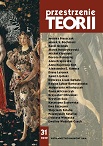Sztuka nie-ludzkich aktorów
Art by non-human agents
Author(s): Diana LelonekSubject(s): Sociology, Environmental interactions
Published by: Uniwersytet Adama Mickiewicza
Keywords: anthropocene; waste; waste-plants; Center for Living Things; mosses; lichen; polimers; habitats; post-human;
Summary/Abstract: The Center for the Living Things is a research institute founded in 2016 in order to examine, collect and popularise knowledge concerning new non-human forms: plants, lichen, fungi and insects. All exhibits gathered in the Institute’s collection are abandoned objects, used commodities and those no longer needed – the debris of human overproduction, which has become the natural environment for many living organisms. Specimens were found in an illegal waste dumping site, where man-derived objects and plant tissues mix. These hybrids of plants and artificial objects are difficult to classify, as they are simultaneously animate and inanimate. Exhibits collected in the Center for the Living Things cannot be classified conventionally. Recently, waste has taken over behaviours from living matter. In the process of overproduction, the incessant need to constantly update the goods we possess is the reason why most of these unnecessary products seem to be out of our control. The Center for the Living Things aims to describe mechanisms appearing in the sphere of rejection and uselessness. In this sphere, products are no longer tools used by people. Products participate in almost every process that occurs in the biosphere, hence we cannot definitively separate economic or social processes from so-called natural processes. The Center aims to draw attention to these processes, seek connections and possible alternatives. Specimens are stored and cultivated in an ever-expanding collection at Poznań’s Botanical Gardens. This institution also organises also houses temporary exhibitions, presentations and workshops. Work is underway on an edition of the ‚Atlas of Waste-plants’ to appear at the end of 2019. More information and a digital version of the Institute’s collection can be found at: www.centerforlivingthings.com.
Journal: Przestrzenie Teorii
- Issue Year: 2019
- Issue No: 31
- Page Range: 135-146
- Page Count: 12
- Language: Polish

